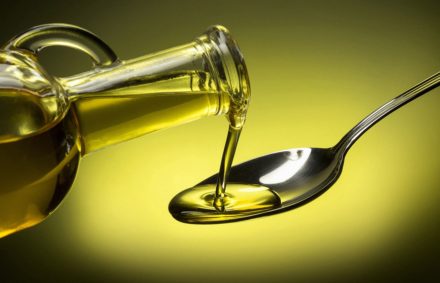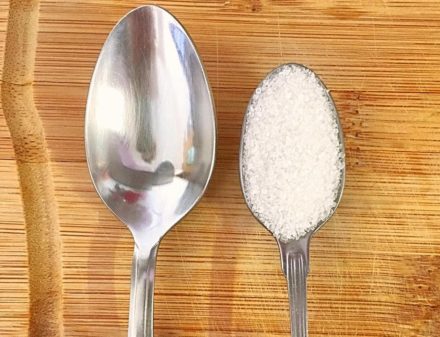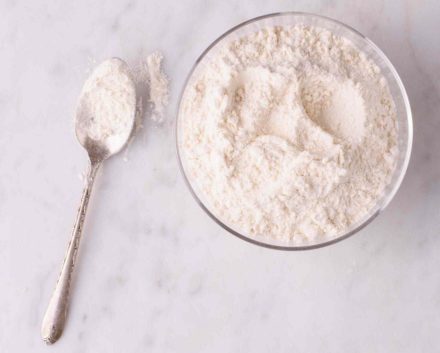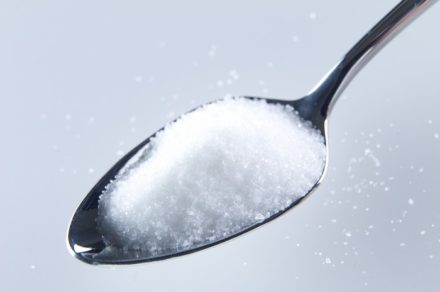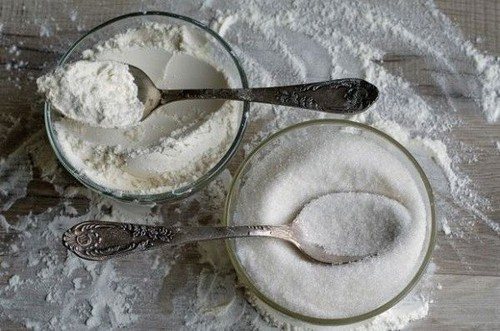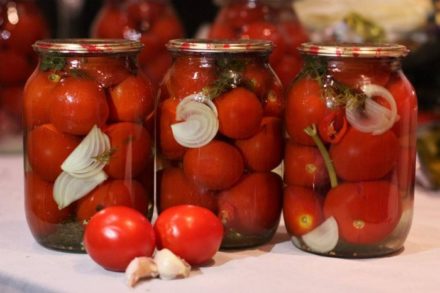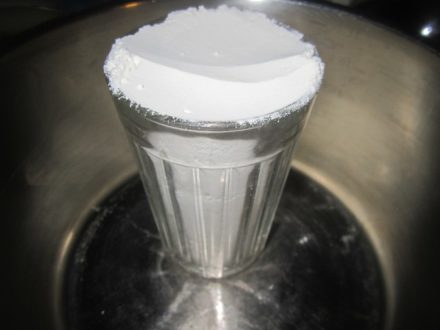Vinegar is a mixture of food acid and water in a certain concentration. It is used not only in the kitchen when preparing dishes, but also in medicine, cosmetology, the food industry or in everyday life. You need to work with it very carefully and add it in the exact amount. To do this, without having working scales at hand, you can use tablespoons and teaspoons, glasses, and shot glasses. We will tell you how many grams and milliliters of vinegar are in a tablespoon or teaspoon, and also, for your convenience, we will provide tables of quick measures of vinegar in spoons.
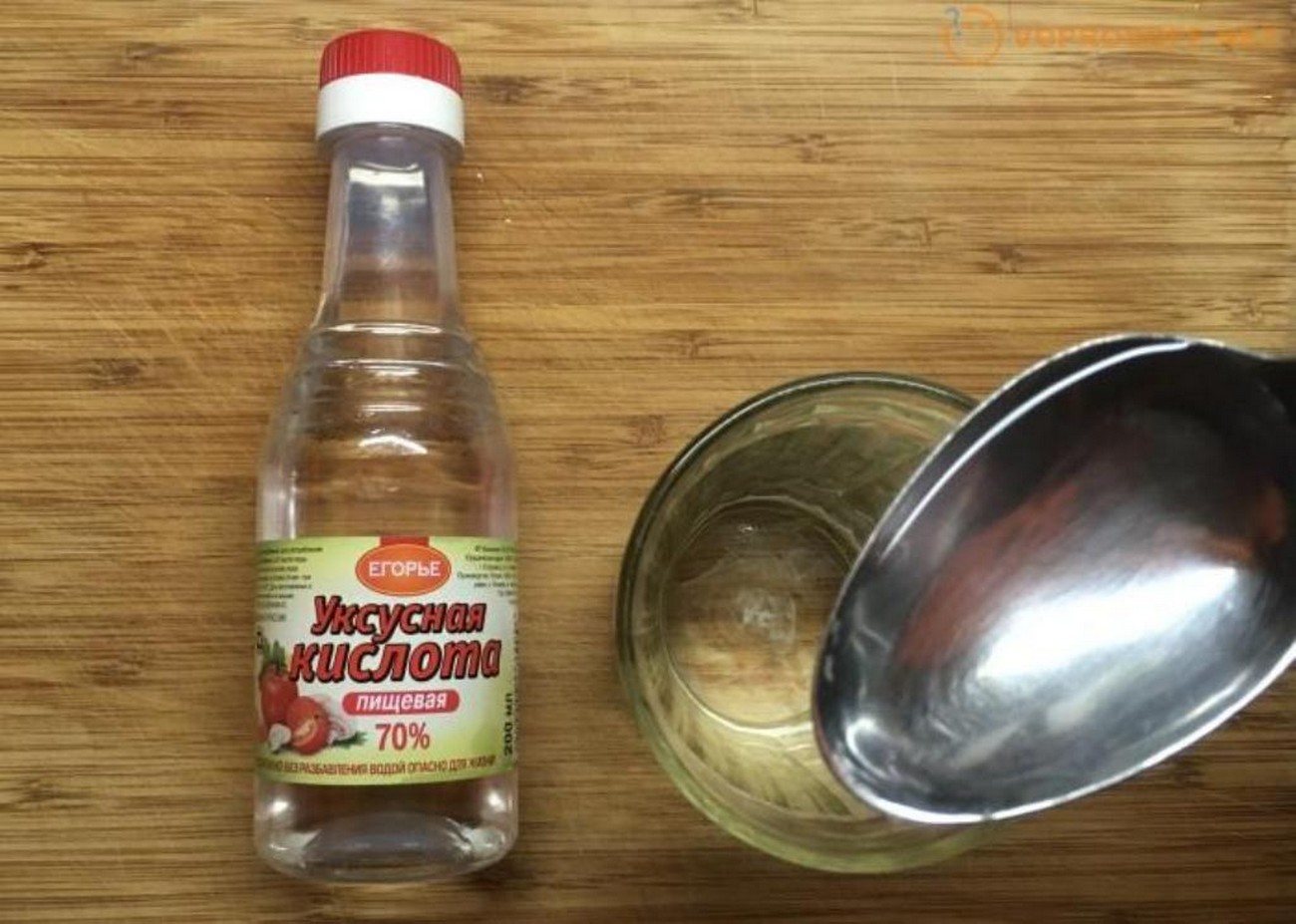
- How many grams and milliliters of vinegar in a spoon?
- Dining room
- Tea room
- Dessert
- Pivot table
- Table of quick measures of vinegar by spoons by grams
- Table of quick measures of vinegar by spoons by milliliters
- Table of quick measures of vinegar by number of spoons
- How many spoons of vinegar in a glass
- How many spoons of vinegar are in a shot glass
- The difference in weight and volume in one spoon depending on the type of vinegar
How many grams and milliliters of vinegar in a spoon?
Spoons as a unit of measurement are used very often, which is not surprising: they can only hold a certain amount of the required product. The errors are minimal.
All types of spoons are used in everyday life: table spoon, tea spoon and even dessert spoon. How can you use them to avoid making mistakes in calculations and measure the required weight of an ingredient?
Dining room
The parameters of standard cutlery are the same in all CIS countries.So, a tablespoon measures 70 mm in length and 40 mm in width, and its volume is 15 ml. With it you can measure 15 grams of vinegar: table, essence or acid.
Tea room
As a rule, a little vinegar is added to the dish. A teaspoon is perfect for such purposes. Its dimensions are 46 mm in length and 32 mm in width, and its volume is 5 ml. Holds up to 5 grams of vinegar, regardless of the percentage.
Dessert
A dessert spoon, unlike a tea and table spoon, is used several times less often. It is customary to use it mainly for eating desserts. It is used extremely rarely as a culinary measure of weight.
Its parameters are: 60 mm in length and 40 mm in width, and its volume is up to 10 ml. This cutlery can measure 10 grams of vinegar.
Pivot table
Combining the information, it turns out that the data is structured as follows:
| Quantity | Weight | Milliliters | |
| Tablespoon of vinegar | 1 spoon | 15 grams | 15 ml |
| Dessert spoon of vinegar | 1 spoon | 10 grams | 10 ml |
| A teaspoon of vinegar | 1 spoon | 5 grams | 5 ml |
Table of quick measures of vinegar by spoons by grams
The table will help determine the required number of spoons to add if the exact weight of the ingredient is specified.
| Weight | tablespoons | teaspoons |
| 5 grams | 1/3 (slightly less than half) | 1 |
| 10 grams | 2/3 (a little more than half) | 2 |
| 20 grams | 1+1 tea | 4 |
| 30 grams | 2 | 6 |
| 40 grams | 2+2 tea | 8 |
| 50 grams | 3+1 tea | 10 |
| 60 grams | 4 | 12 |
| 70 grams | 4+2 tea | 14 |
| 75 grams | 5 | 15 |
| 80 grams | 5+1 tea | 16 |
| 90 grams | 6 | 18 |
| 100g | 6+2 tea | 20 |
| 120 grams | 8 | 24 |
| 150 grams | 10 | 30 |
| 180 grams | 12 | 36 |
| 200 grams | 13+1 tea | 40 |
| 250 grams | 16+2 tea | 50 |
| 300 grams | 20 | 60 |
Table of quick measures of vinegar by spoons by milliliters
You can refer to the table to measure the required number of spoons to add if a certain volume of the ingredient is indicated.
| Milliliters | tablespoons | teaspoons |
| 5 ml | 1/3 (slightly less than half) | 1 |
| 10 ml | 2/3 (a little more than half) | 2 |
| 20 ml | 1+1 tea | 4 |
| 30 ml | 2 | 6 |
| 40 ml | 2+2 tea | 8 |
| 50 ml | 3+1 tea | 10 |
| 60 ml | 4 | 12 |
| 70 ml | 4+2 tea | 14 |
| 80 ml | 5+1 tea | 16 |
| 90 ml | 6 | 18 |
| 100 ml | 6+2 tea | 20 |
| 120 ml | 8 | 24 |
| 150 ml | 10 | 30 |
| 180 ml | 12 | 36 |
| 200 ml | 13+1 tea | 40 |
| 250 ml | 16+2 tea | 50 |
| 300 ml | 20 | 60 |
Table of quick measures of vinegar by number of spoons
How much vinegar is meant by a certain number of spoons? It is clearly shown in the table.
| Number of spoons | Grams in tablespoons | Grams in teaspoons | ml in tablespoons | ml in teaspoons |
| 1 | 15 | 5 | 15 | 5 |
| 2 | 30 | 10 | 30 | 10 |
| 3 | 45 | 15 | 45 | 15 |
| 4 | 60 | 20 | 60 | 20 |
| 5 | 75 | 25 | 75 | 25 |
| 6 | 90 | 30 | 90 | 30 |
| 7 | 105 | 35 | 105 | 35 |
| 8 | 120 | 40 | 120 | 40 |
| 9 | 135 | 45 | 135 | 45 |
| 10 | 150 | 50 | 150 | 50 |
How many spoons of vinegar in a glass
A glass is often used in everyday life to measure a particular product. However, if previously it was approximately the same size in each family, now some difficulties may arise: glasses are produced in different sizes, shapes and volumes. What to do in this case?
If the recipe indicates the amount of the added ingredient in faceted glasses, then it means either its volume is 200 ml or 250 ml - these used to be the standards in the CIS countries. Therefore, before you start cooking, you should check with the author which of the two main volumes was taken.
Referring to this data, we can determine that:
- A 200 ml glass holds 200 ml or 200 grams of vinegar. If converted into spoons, this is approximately 13 tablespoons, 20 dessert spoons or 40 tea spoons.
- A 250 ml glass holds 250 ml or 250 grams of product.
Which is equivalent to approximately 17 tablespoons, 25 dessert spoons and 50 teaspoons.
How many spoons of vinegar are in a shot glass
A shot glass is a small glass (shot glass) that is usually used for alcoholic beverages. It has been used as a measuring container since the times of Ancient Rus', which is now rare. If earlier its volume was meant as 50-60 ml, then now there are numerous options: from 25 to 100 ml. But, as a rule, they use stacks of 25, 40, 50, 60 and 100 ml. In recipes, when measuring an ingredient, each of them may be implied, so this point should be clarified in advance.
- A 25 ml shot glass – 25 ml or 25 grams of vinegar; approximately 1.5 tablespoons, 2.5 dessert spoons, 5 teaspoons.
- A 40 ml shot glass – 40 ml or 40 grams of vinegar; a little less than 3 tablespoons, 4 dessert spoons, 8 teaspoons.
- A 50 ml shot glass – 50 ml or 50 grams of vinegar; a little more than 3 tablespoons, 5 dessert spoons or 10 teaspoons.
- A 60 ml shot glass – 60 ml or 60 grams of vinegar; 4 tablespoons, 6 dessert or 12 teaspoons.
- A 100 ml shot glass – 100 ml or 100 grams of vinegar; a little less than 7 tablespoons, 10 dessert spoons or 20 teaspoons.
The difference in weight and volume in one spoon depending on the type of vinegar
Vinegar has 3 main types and many varieties. Types are divided by percentage: table (3%, 6%, 9%, 15%), essence (70%, 75%, 80%) and acetic acid (100%). But, as a rule, when they mention “vinegar”, they mean table vinegar, usually nine percent. By the way, to get a lower concentration of acid, you can simply dilute it with water in a certain percentage.The density of all types is almost equal, so their weight and volume in spoons or glasses will be the same.
Considering the types of vinegar by the original raw materials, the following can be distinguished:
- table vinegar from rectified ethyl alcohol and intermediate products of its production;
- apple cider vinegar from juice or pressed apples;
- red and white wine vinegar from, as the name suggests, red or white wine;
- rice from fermented rice or rice wine;
- balsamic from grape juice;
- malt from fermented beer wort;
- sherry from sherry.
Despite the fact that the original products are different, their weight and volume will be the same.
It has been scientifically proven that vinegar in moderate quantities lowers blood sugar levels and has an antimicrobial effect. In addition, it improves the taste of the dish and makes you feel full for a long time. I like


